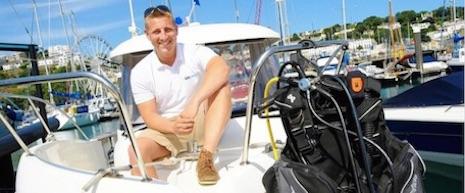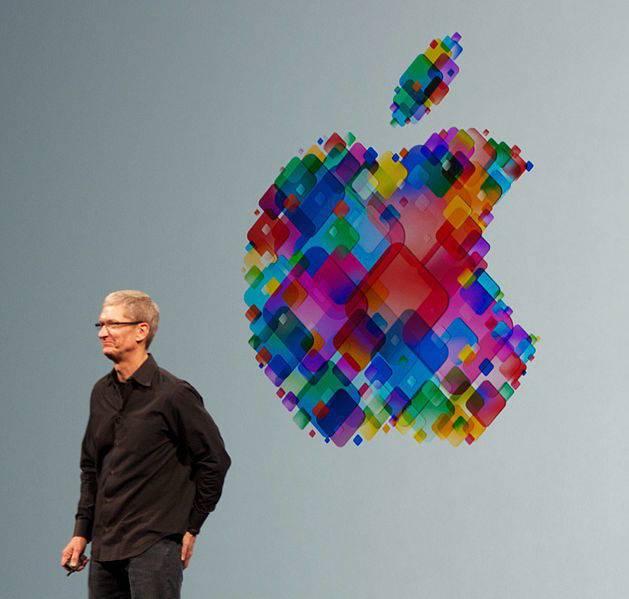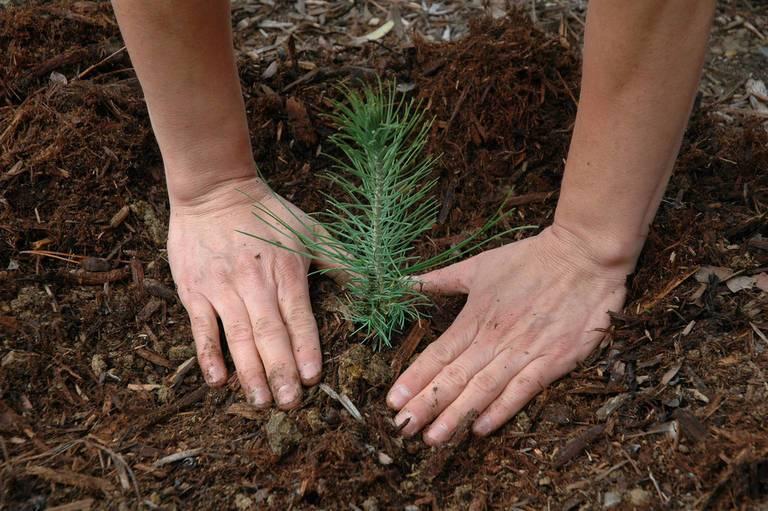The important business of ocean conservation


Hurricane Harvey Demonstrates Critical Value of ‘Big Government’


Walmart’s actions during and after Hurricane Katrina have long been described as one of the few bright spots during that agonizing relief effort, as well as a transformative event for the world’s largest retailer.
Another outcome apparent after Katrina is that federal government agencies, and the presidents ultimately responsible for leading them, have been far more proactive when disasters strike, as they have wanted to avoid following in George W. Bush’s footsteps. Fair or not, that administration came across as ham-fisted long after Katrina slammed into Louisiana and neighboring Gulf states. As a result, it is doubtful there will be any room for a company to shine through in Houston as Walmart did 12 years ago – though Walmart itself has been updating stakeholders about what the company is doing to support Hurricane Harvey recovery across Texas.
While companies have a critical part in assisting relief efforts with their supplies, staff and facilities, Harvey reminds us of the role that “big government” has in preparing, notifying and helping citizens during this time of need. Many of these agencies, from NASA to NOAA to the EPA, have come under scrutiny – or more accurately, attack - in recent years for their various roles in researching climate change, boosting environmental protection efforts, or both.
The timing is also prescient considering the sniping that is already underway between Texas Senator Ted Cruz and his critics. Cruz obviously supports aid efforts for his home state, yet he voted against federal Hurricane Sandy relief packages during his first year in office. He claims he voted against the $50 billion Sandy relief bill because it was loaded with “pork” but that claim has been proven untrue by many. Cruz even got a rebuke from New York’s Peter King, a Republican representative from Long Island.
And as Cruz announces how and where Texans can receive state and federal assistance, we at 3p thought we would point out the role “big government” has in warning, protecting and helping citizens during catastrophes such as Harvey. As the recent viper pit of a debate over healthcare has proven, many of us are against government in any form – until we need it or there is a risk a program will be taken away from us, even if what is available is imperfect.
National Oceanic and Atmospheric Administration (NOAA)
This scientific agency tucked under the Department of Commerce’s wing gauges the conditions of both the world’s oceans and atmosphere. Its tasks (despite ongoing distractions) include developing technologies and systems that can help scientists understand tornadoes, hurricanes and the health of coastal ecosystems. Currently it forecasts Harvey’s strength and issues advisories. Divisions such as the National Hurricane Center provide data to anyone who needs it, from local meteorologists updating local viewers and listeners, to insurance companies and utilities trying to price their services and products based on weather variability.
NASA
While NOAA gives us the view of climate events from land, sea, as well as the air immediately hovering over us, NASA (an independent agency, designed in part to stay free of politics like the Securities and Exchange Commission and the Federal Reserve), manages and operates the tools that can help us observe what is going on from space. NASA’s satellites and its partnership with the International Space Station provide real-time data and images that can be harnessed by the agency’s friends monitoring the situation on the ground. Measuring and predicting those sudden shifts in wind, or estimations of upcoming rainfall gleaned from several days of satellite data, are amongst the ways in which NASA contributes to monitoring Harvey’s constantly shifting patterns.
Environmental Protection Agency (EPA)
Even under Scott Pruitt, the EPA offered to take a leadership role as Harvey eventually dissipates. Houston is known to have more than its fair share of energy and petrochemical companies. Assessments of the greater Houston region’s 300 water systems, the securing of Superfund sites and fuel waivers allowing for emergency supplies of gasoline are among the tools that the EPA’s regional office in Dallas has at hand if needed. EPA employees may have already been called to action by the time of this writing.Two ExxonMobil refineries have reportedly suffered damage and released hazardous chemicals already and more damage is likely to come to light as waters subside.
Federal Emergency Management Agency (FEMA)
Estimates of the costs resulting from Harvey are all over the map, from $30 billion to even $100 billion. Bloomberg has concluded Katrina’s damages amounted to $160 billion. Insurance companies will pick up some of that price tag; FEMA, which faces a budget cut of as much as 9 percent in recent proposals, will in-part contribute to the costs of clean-up and recovery. Since the late 1970s, the agency’s mandate is to send staff to coordinate with overwhelmed state and local officials as they cope with natural and made-made disasters. And that list is long, from the 1989 Loma Prieta Earthquake in California to the horrific 1995 bombing of the Alfred P. Murrah Federal Building in Oklahoma City. Experts from FEMA work with local officials on recovery efforts. The agency also helps fund infrastructure repair and directs citizens to resources for low-interest loans (a program currently struggling due to a mounting deficit) so they can rebuild homes and businesses. Day in and day out, FEMA also provides online and live training for disaster preparedness.
These agencies are just a few of the moving parts that manage recovery when disaster strikes.
Image credit: DVIDS
Apple's Tim Cook Steps Into the Limelight, Urging Companies to Lead on ‘Moral Responsibility’


Long understated and appearing to avoid the limelight when compared to his predecessor, Steve Jobs, Apple CEO Tim Cook has not just stepped out of Jobs’s shadow - he has leaped from it.
Jobs has long been credited with not only rescuing Apple from near irrelevance in the 1990s and lifting it to its current status as the world’s most valuable company – but Cook has been more than a simply a steward for the company. And in contrast to Job’s reputation for being a fierce perfectionist and a singular cult-like figure, Cook has groomed a reputation for valuing teamwork while his relative calmness helps position Apple as a sought-after employer. Meanwhile, Cook continues to respect Jobs’s legacy, as a comment he made last year that the late co-founder and CEO is “irreplaceable.”
Cook has been conducting himself far less as a replacement and more as a strategist guiding Apple to its next phase – one that sees the company not only as a consumer electronics leader, but one that is more transparent and socially responsible than in previous years. Meanwhile, investors have been more than satisfied as Apple's stock price continues its upward trajectory.
Jobs was laser-focused on innovation, which of course contributed to the company’s success the past 15 years as it rolled out products such as the iMac, iPhone, iPad and iTunes. Cook has nudged Apple to become a more active corporate citizen when it comes to the environment or social issues. Fair or not, Jobs had the reputation for spurning philanthropy in contrast to his peers such as Bill Gates or Warren Buffet. But Cook has been public about doing the very opposite, as shown most recently in his announcement that Apple will donate $2 million to anti-hate groups in the wake of the violence in Charlottesville.
Cook’s emergence as a business executive ready to confront America’s social ills was long underway before Charlottesville, but the aftermath, and the U.S. president’s handling of that tragedy, clearly pushed him to become even more outspoken. In widely distributed remarks after President Trump’s much criticized remarks during a press conference at Trump Tower on August 15, Cook wrote:
"I disagree with the president and others who believe that there is a moral equivalence between white supremacists and Nazis, and those who oppose them by standing up for human rights," Cook wrote. "Equating the two runs counter to our ideals as Americans."
Cook reiterated his stance in an interview earlier this week with the New York Times, when he said:
“I think we have a moral responsibility to help grow the economy, to help grow jobs, to contribute to this country and to contribute to the other countries that we do business in.”
That hardly sounds like an executive snuggling with Wall Street.
Cynics will be quick to point out that Cook recently collected an estimated 560,000 Apple shares worth almost $90 million. Apple also reportedly has almost $250 billion dollars stashed mostly overseas, and its products are mostly manufactured on the other side of the Pacific Rim. To those who buy into the narrative that the one percent rules the world, those actions far outweigh Cook’s increasingly combative words.
At the same time, Cook and Apple have realized that more investment in people and the planet is needed if the company will be viable in the long run. The company has launched an education program to encourage more people to develop apps, says it is investing $1 billion to boost U.S. manufacturing and has quietly hopped on the clean energy bandwagon.
The reality is that as more Americans throw up their hands as their governments devolve into partisan bickering, companies have a wide opening to step in and lead. And Cook clearly sees an opportunity with a president who punted on a chance to heal the country earlier this month, and more recently used the Hurricane Harvey tragedy to focus more attention on himself.
To that end, a snippet of a speech Cook highlighted is telling, especially since it is the only entry on his Medium profile:
“There has been something crude and heartless and unfeeling in our haste to succeed and be great. Our thought has been, ‘Let every man look out for himself, let every generation look out for itself,’ while we reared giant machinery which made it impossible that any but those who stood at the levers of control should have a chance to look out for themselves.”
Image credit: Mike Deerkoski/Wiki Commons
Concrete Jungle Exacerbates Houston Flooding


In the coming weeks, experts anticipate that Houston residents will be at risk for something normally only seen in disasters in developing countries: the spread of infectious disease brought on by exposure to contaminated floodwaters and crippled infrastructure.
The Texas Department of State Health Services is already preparing for what some fear could morph into a public health crisis with insufficient potable water, high humidity and bacteria-laden floodwaters that will take time to recede.
That's because Houston has a serious design problem. While many have been quick to blame the city's record-breaking flooding on Hurricane Harvey, the real problem points out The Atlantic's contributing editor Ian Bogost has less to do with record-breaking rainstorms and everything to do with planning and design.
"The reason cities flood isn’t because the water comes in, not exactly. It’s because the pavement of civilization forces the water to get back out again," explains Bogost.
It's not a unique problem, either. San Diego faced the issue in the 1980s when a series of record storms flooded out streets, destroyed homes and forced the city to apply for emergency disaster funding. The problem was poorly designed infrastructure that wasn't up to record-size rainstorms.
But Houston's deluge highlights another problem: climate change will be even more difficult to manage in an environment already at risk to chronic flooding.
In recent years, local institutions like the Houston Medical Center and the NASA Johnson Space Center have worked hard to address environmental risks. Tropical storm Alison taught the country's largest medical center a valuable-if-painful lesson about unexpected crises when its bottom floor flooded, killing thousands of laboratory animals, decimating irreplaceable records and forcing emergency evacuations.
NASA's proactive efforts at the Houston facility paid off this week during the siege from Hurricane Harvey.
TriplePundit has written on these efforts in the past, highlighting the strides that were made through climate mitigation. But even though both Houston facilities appear to have weathered Hurricane Harvey, the ability of the city's critical medical system to treat patients quickly was hampered by the fact that the rest of the city had not taken similar steps to mitigate the impact of environmental hazards like flooding.
What's interesting is that the city has been at the forefront of green city initiatives. It endorsed the "We Are Still In" campaign. It has maintained its website on climate change and sustainable living, despite the fact that it notes the Environmental Protection Agency removed the information from the federal site in April. Its efforts are complemented by a separate initiative, the Houston Advanced Research Center (HARC), which promotes "independent analysis on energy, air, and water issues to people seeking scientific answers."
But as in a growing number of cities, those efforts haven't yet dug below the seeming inpenetrable layer that poses the greatest challenge for addressing climate change: Houston's concrete infrastructure.
Other cities face similar problems. In 2013, the city of Wuhan, China, realized it had a problem. Known euphemistically as the "city of a hundred lakes," Wuhan has found in recent years that it's the streets, stadiums and buildings, not the natural bodies of water, that now serve as retention areas for the region's copious rains. The problem, in short, is concrete -- and a failure to build drainage systems that can keep up with burgeoning city expansion.
So far, Wuhan's upgrades have yet to be completed. According to researchers at CLIMSystems in New Zealand, numerous delays by the government have pushed the completion date off to 2018. But as in Beijing, where dozens of deaths were attributed to flooding in 2012, engineers know that city expansion and proper design are at the heart of mitigating climate change. According to engineers, Beijing was able to control flooding problems during a rainstorm 2016 because it had upgraded its sewage system to meet population demands.
As West Coast U.S. cities are finding, climate change mitigation doesn't just mean putting up higher sea walls or building submarine doors for its medical facilities. but keeping ahead of the infrastructure needed for population and real estate expansion. But Houston's topography begs another question, one that is going to be even harder to address in coming years: Are there environmental settings in which populations should be limited? Can a low-lying plain with poor drainage soils, heavy rains support unlimited community expansion?
To be sure, population control is a highly unpopular debate in the U.S. And as is so often the case, unpopular issues tend to spawn better, more acceptable answers. But if there's any message to be gained from Harvey's landfall this weekend, it's that climate change mitigation is a must, even if the Trump administration's new executive order puuts safe building mandates benind.
Flickr images: Hurricane Harvey -- The National Guard; Beijing -- Ernie
Welcome to Fort NOx: Diesel Industry Braces For Impact


By Dr. Maximilian Martin
“Welcome to Fort NOx!” This is how a Greenpeace banner from the roof of the German Federal Ministry of Transport greeted German auto industry guests attending the Diesel Summit, convened by the German government on August 2, 2017, in Berlin.
Two years earlier, dark clouds had started to form because of the Volkswagen dieselgate emissions scandal. The summit aimed at dispelling them. Recent accusations that Germany’s leading automakers may have been colluding to minimize the costly cleaning of diesel nitrogen oxides had further undermined public confidence.
Could this industry really come up with a solution itself? Or was the mobility transition more like the energy transition, requiring bold steps from above, such as Germany’s exit from nuclear energy?
By not offering a compelling solution, the summit ended up moving the issue to the center of the German federal election campaign currently under way, raising political and capital market risk.
A new mobility paradigm in the making
The summit’s backdrop is the transformation of mobility around the world, best compared to replacing horses a century ago. Cars are becoming clean-energy powered computers that transport passengers. The joint impact of autonomous driving, car sharing, and electrification will turn auto makers into something more akin to handset producers in the mobile phone industry. The Near Future report views the $2 trillion global automotive industry market with 73.9 million vehicles shipped in 2015 as the world’s biggest tech market, way ahead of smartphones, computers and televisions. On the verge of being completely transformed by autonomous driving technology, it predicts car ownership falling to perhaps only one car per every 12 people, auto insurance cost dropping by over 60 percent, and emissions by 90 percent, once self-driving vehicles become the new normal.
In such an environment, much of the value will be derived from platform-related services such as Apple’s App Store in smartphones, rather than the commoditized hardware itself. Companies that fail to adapt to the shift toward clean mobility will moreover carry higher levels of environmental, social and governance (ESG) risk. Eventually, this is bound to affect their valuations and cost of capital.
The early signs of a seismic shift are here
On July 5, 2017, Volvo’s CEO Håkan Samuelsson set 2019 as the date for the total phase-out of combustion-engine-only models. From then on, the Chinese-owned Scandinavian carmaker will make all of its cars electric or hybrid. Venture capitalists channeled over $1 billion to early-stage tech companies with a primary focus on autonomous vehicle technology and systems in eighty-seven deals in 2016, setting a new record. General Motors bought Cruise, a two-year-old startup building an autonomous driving system for $1 billion. In Europe, countries such as France and the UK plan not to allow any new cars with internal combustion engines on the road after 2040. If horses are anything to go by, the transition could also happen much faster, depending on technology, political will, and capital markets.
Catalytic events will accelerate the mobility transition
Back in Germany, stakeholders wanted the summit to provide answers: how do the approximately 8.6 million diesel vehicles currently registered in Germany that fall into the Euro 5 emission class or the concerned part of the Euro 6 class fit with the emerging mobility paradigm?
Vehicles subject to the Euro 6 norm on average emit more than six times the nitrogen oxide (NOx) permitted. Would they be able to circulate everywhere in the future, unhindered? Owners are hardly pleased that their expensive cars risk becoming stranded consumer assets.
The summit offered little in terms of a forward-looking solution reconciling clean mobility with car maker competitiveness. Rather than mechanical retrofitting with Selective Catalytic Reduction (SCR) active emissions control technology to bring NOx emissions down to the required levels, automakers proposed installing a new software patch in more than five million diesel cars. This counting in the 2.5 million Volkswagen vehicles where work is already in progress.
Manage the shift away from diesel and gasoline
The tradeoff between carbon dioxide (CO2) and NOx emissions, paired with the growth of e-mobility from a low baseline adds to the challenge, and needs to be managed. In 2014, Green Car Report estimated that 1.2 billion cars were circulating on the world’s roads. The global car fleet is expected to grow to two billion by 2035. Helped by policy incentives, widespread e-mobility is currently emerging as a third option for the global car industry.
Otto motors running on gasoline and diesel engines nevertheless remain the bedrock of the world’s car fleet today. They offer different climate tradeoffs. When two combustion engines are built to withstand identical mechanical and thermal stress, the cycle efficiency of diesel engines is higher than that of Otto motors. As a result, comparable diesel engines emit less carbon dioxide. But they are also dirtier: in the European Union, a total of 28,500 deaths due to diesel nitrogen oxide was estimated in 2015.
With environmental standards gradually tightening over the last three decades, the car industry faced a strategic choice: to render petrol engines more fuel efficient (like a diesel), or to make diesel engines cleaner, as a gasoline. Dieselgate has shown that the latter effort has thus far largely failed.
For e-mobility to become core to mobility, among other things, it will be essential to resolve the current constraint of the physical availability of cobalt, a needed component for high-energy lithium-ion batteries. Otherwise, supply scarcity will limit the growth of the likes of Tesla, as well as those who are now embracing e-mobility, such as a consortium of 17 German firms and research institutes, which unveiled plans for a new lithium-ion battery plant designed to rival Tesla Inc.’s Gigafactory two months ago.
In the grand scheme of things, the other options theoretically on the table, fuel cells and “DiesOtto” engines, currently look like side shows. The reaction between a fuel, such as liquid hydrogen, and an oxidant, such as liquid oxygen, creates energy in a fuel cell that is converted into electrical energy. DiesOtto motors combine diesel engines’ lower fuel consumption and reduced CO2 emissions with cleaner and higher performing gasoline engines. The auto industry enthusiastically announced the marriage of diesel and gasoline a decade ago; not much has happened since.
All in all, Green Car Congress expected just 2.5 percent of the new additions to the global car fleet to be battery electric, plug-in hybrid, or fuel-cell vehicles by 2035, with the rest running on gasoline or diesel fuel. This may be overly pessimistic. Notwithstanding, a successful national mobility transition is more likely to succeed if it is actively managed, combining market incentives with exit rules that create planning certainty, and if it understands the tech dimension of the future of mobility.
With capital market risk rising, brace for impact
There is growing clarity which firms are successfully embracing the new sustainable business models that disrupt industries, and who are the laggards. For the German auto industry incumbents, capital market risk is now rising. If diesel sales keep tanking, these automakers will not be able to fulfill the European Union car fleet target value of 95 g/km of CO2 from 2021 on. Billions of Euros in fines would provide a blow to company valuations.
By doing too little, the Diesel Summit may well end up helping create the perfect storm that will ultimately accelerate the mobility transition. Depending on the outcome of the upcoming German federal election, carmakers and their investors might want to brace for impact. Fort NOx may not be so impenetrable after all.
Dr. Maximilian Martin is the Founder of Impact Economy. The opinions expressed in this article are the author’s own and do not reflect the views of organizations whom he serves in an executive or board of directors’ capacity.
Scotland Ramps Up Offshore Wind, Benefits Ripple Across the Pond


Scotland has been in the vanguard of the global offshore wind energy race, and in the latest development the Scottish government has just committed additional funding to the Offshore Wind Accelerator, an initiative of The Carbon Trust. OWA launched in 2008 with core support from Scotland, and it gained steam last year, when nine offshore wind developers lent their financial muscle to the mission of lowering the cost of offshore wind.
That's good news for the U.S., where political obstacles have delayed the development of the nation's vast offshore wind resources. The nine developers share a global reach between them, and the prospect of lower costs could help break the U.S. offshore logjam.
The Carbon Trust and offshore wind development in the U.S.
The Carbon Trust is a not-for-profit green consulting firm that launched in 2001 with a focus on helping all comers -- businesses, governments and nonprofits -- to realize the bottom line benefits of decarbonization and sustainability.The Offshore Wind Accelerator is Carbon Trust's "flagship" research and development collaboration with private industry. When it was established in 2008, OWA included nine partners that collectively accounted for 76 percent of installed offshore capacity in Europe: Europe; DONG Energy, EnBW, E.ON, Iberdrola, Innogy, SSE (the renewable energy division of Scottish and Southern Energy), Statkraft, Statoil and Vattenfall.
OWA emphasizes innovation as the primary pathway to cost reduction:
Technology challenges are identified and prioritised by the OWA partners based on the likely savings and the potential for the OWA to influence the outcomes. Projects are carried out to address these challenges, often using international competitions to inspire innovation and identify the best new ideas. The most promising concepts are developed, de-risked and commercialised as the OWA works closely with innovators and the supply chain throughout the process.
The U.S. Department of Energy has practiced a similar model of public-private partnerships and competitions designed to stimulate and encourage innovators, though primarily in the solar energy field. Efforts to stimulate private sector interest in offshore wind have lagged behind in the U.S., partly due to market uncertainty.
There are a number of factors at play, including the political environment. In 2010 the Obama administration attempted to coordinate offshore wind development along the wind rich Atlantic Coast, but several states refused to join a memorandum of understanding or failed to follow through on their commitments. Before Obama left office, the Department of the Interior finally began leasing out offshore areas with or without support from state-level political leaders.
As a result, while other nations have had "steel in the water" for years, the U.S. has only one offshore wind farm in operation, a modestly-sized five-turbine development that began commercial operations off the coast of tiny Rhode Island in May.
Progress under the Trump administration is uncertain considering the President's antipathy toward renewables in general and wind in particular. However, as of this writing the Interior Department is still carrying out its offshore lease program and it looks like Block Island will have company sooner rather than later -- thanks in part to the OWA collaboration.
Last spring, for example, the OWA partner Ibderola won the right to develop 1,500 megawatts of capacity off the coast of North Carolina, through its Avangrid branch.
In addition, Trump's interest in promoting oil and gas development off the Atlantic could backfire if state political leaders decide that wind is the lesser of two evils. Though coastal states are mindful of the visual impact of wind turbines on tourist traffic, the Mid-Atlantic Regional Planning Body wrote a draft plan for ocean management last year that leans heavily on offshore wind.
Scotland ramps up offshore commitment
The new round of £1.5 million in funding for OWA places Scotland firmly in the lead of offshore wind energy development.
Scotland's Energy Minister, Paul Wheelhouse, announced the funding with a "ringing endorsement" linking economic development to clean energy:
...The potential benefits of offshore wind energy in Scotland are enormous, which is why the Scottish Government is committed to its development. By continuing to invest in it, not only are we stimulating economic change for the better, but we’re also helping to reduce greenhouse gas emissions in Scotland and helping to fight the impacts of climate change.
The Director of Carbon Trust, Jan Matthieson, emphasized that the mission of OWA is to enable offshore wind to compete with fossil fuels without subsidies. The advent of "subsidy-free" offshore wind development would effectively knock out one of the main arguments used against renewable energy development.
The new funding will enable OWA and its nine partners to continue exploring opportunities and overcoming challenges to the development additional wind energy in Scottish waters, and share innovations that lead to lower costs.
Trump proposes, Scotland disposes
Scotland's enthusiasm for wind energy is somewhat ironic, considering the notorious controversy that erupted over the location of the new Aberdeen wind farm within sight of a Trump golf course and resort.
Plans for the resort and related development took off in 2007 but are yet to be realized in full, partly because the President has contended that the turbines would ruin the view from the links.
As of last year Trump was losing the legal battle. He continued losing it earlier this month, when Scotland's environmental agency nixed the President's plans to develop a second course at the resort.
Adding insult to injury, the 11-turbine wind farm is not just any ordinary wind farm. It's also the future home of the European Offshore Wind Deployment Centre, which will closely monitor the performance of next-generation technology aimed at increasing efficiency and lowering costs.
If it all works out, the technology improvements will be shared among the corporate partners and ripple out to new wind projects in the U.S. and elsewhere around the globe.
Stay tuned.
Image (screenshot): via Vattenfall/YouTube.
Hurricane Harvey Tests Limits of Federal Flood Insurance Program


In addition to the loss of life, mass evacuations and extensive property damage in the Houston area, Hurricane Harvey’s impact on southeastern Texas is offering another grim reminder: The federal government’s national flood insurance program is about to become even more financially unsustainable.
Operated by the Federal Emergency Management Agency (FEMA), the National Flood Insurance Program (NFIP) has covered coastal properties since private insurers began refusing to insure these properties the 1970s. FEMA works with private insurance companies who underwrite these homeowners’ policies. FEMA flood maps determine the cost of these policies’ premiums once homeowners purchase them. In the event of a flood, the insurance company determines the scope of the damage and much can be paid out to the policy holder. Those same companies collect the premiums, and keep some of the funds to cover their expenses.
Since the program launched in 1978, NFIP has worked largely as planned, taking in more in premiums than it pays out for property damage reimbursements. But Hurricane Katrina in 2005 and Superstorm Sandy in 2012 together walloped the program.
Now, NFIP is over $24 billion in debt, and most experts agree that this deficit has grown largely for two reasons. First, FEMA has been slow to update its maps – in the aftermath of Katrina, it had turned out its maps had not been updated in over 20 years. The Natural Resources Defense Council (NRDC) also claimed that out-of-date maps contributed to both the shock and damage across New York and New Jersey after Sandy pummeled the region.
Furthermore, NFIP has been a political football, as politicians from coastal states have been loath to permit premiums increases under their watch. Proposals to account for risks due to not only historic flood threats, but to also for climate change and sea level rise risks, have long been a non-starter on Capitol Hill.
Even though mounting evidence suggests that more flooding over the past decade has occurred in areas outside conventional flood plains, citizens still covet homes in coastal areas. Congress passed a law in 2012 that required FEMA and NFIP to charge market rates, and climate change became a factor in how these policies were priced. But homeowners pushed back hard, and Congress moved quickly to undo that law. Another rate increase was enacted in 2015 as Congress scrambled to find a way to hack away at NFIP’s deficit, but homeowners lashed out again, and the cycle has continued. In recent years, many homeowners believed FEMA’s new flood maps were often arbitrary – giving opponents even more ammunition in their fight against higher flood insurance premiums.
Therefore, while many politicians and citizens are beside themselves over the Affordable Health Care Act (“Obamacare”), NFIP’s single-payer insurance system is asking taxpayers to subsidize the lifestyle choices of people who insist on living near the water – but do not want to pay market rates for insurance. “Federal officials in Washington set rates and taxpayers assume all the risks,” Eli Lehrer summed up on Huffington Post in 2014.
According to a Reuters interview with an executive at the budget watchdog group Taxpayers for Common Sense, the program’s $24 billion deficit could surge as high as $30 billion as claims filed in Harvey’s aftermath begin to accumulate. But do not watch for improvement on this front at any point soon. For example, in 2015, former President Obama issued an executive order that sought a new flood risk reduction standard for federally funded projects. But President Trump revoked that order on August 17. The result, insists Taxpayers for Common Sense, will “effectively force taxpayers to subsidize construction that puts people and property in harm’s way. This isn’t even penny wise, pound foolish – it’s just foolish.”
Meanwhile, the U.S. General Accounting Office (GAO), which has several roles including one as the federal government’s lead auditor, has warned that NFIP’s design is not structurally sound – and its precarious financial position has landed the program on the agency’s “High-Risk” list since 2006.
Image credit: NASA/Flickr
Why Companies Like Salesforce Differentiate on Gender Pay Equity


By Emilee Regan
Women's Equality Day (August 26) marked 97 years since women in the United States were granted the right to vote. But when it comes to establishing a holiday to commemorate the elimination of our gender wage gap, the outlook is bleak.
Government support and intervention have guided past corporate efforts in this area, but today it seems we are veering off the path toward gender parity. In March, President Trump signed an executive order revoking the Fair Pay and Safe Workplaces Executive Order signed by President Obama in 2014, which helped prevent companies from discriminating against women on their payroll. The White House-led corporate equal pay pledge has been moved from WhiteHouse.gov to the archives. And the Administration's own payroll appears to bring its philosophy to life: an analysis last month from conservative think tank American Enterprise Institute reports a 37 percent gender pay gap at the White House, up from 11 percent in the Obama White House's final year. (That means the typical female White House staffer is earning 62.3 cents per $1 earned by a typical male staffer.)
Many of our global counterparts are exploring solutions to the problem through legislation. Most notably, Iceland is poised to become the first country in the world to require that companies prove pay equity, with a bill expected to be made law in 2018. The law would require private companies and government agencies to go through audits and receive certification that equal pay is provided, or face fines. (Interesting side note: 50 percent of lawmakers in Iceland's parliament are women). In the UK, employers with 250 or more employees must publish their gender pay gap on their public-facing website and report their data to an online government database by April 2018, a policy that is already spurring corporate action (and public outrage).
In the absence of government regulation here in the U.S., 63 percent of Americans are hopeful businesses will take the lead to drive social and environmental change. And 84 percent of Americans want companies to address women's rights specifically. So how can socially-responsible companies differentiate themselves among corporate peers who are quick to sign on to the notion of equal pay for equal work, but resistant to the transparency required to actually prove it?
1. Understand the important difference between championing pay equity and paying equally, and expect your stakeholders will too.
Of course companies are quick to support pay equity! The risk, however, lies in not being able to back up your claims of support with business practices. Consumers are becoming increasingly savvy about corporate claims versus reality – 76 percent of millennials say they will do research to determine if a company is being authentic when taking a stand on a social or environmental issue.
Audi's "Daughter" Super Bowl commercial is a prime example of consumers wanting to look under the hood to investigate the credibility of a company's stance. The ad features a father as he watches his daughter compete in a cart race, and questions how he should explain to her that she won't be valued the same as her male peers throughout her life. The ad ends with an on-screen message: "Audi of America is committed to equal pay for equal work." The day after launching online, the 60-second ad had garnered more than 2 million views on YouTube, as well as more than 18,000 negative comments, compared to 1,110 positive comments. While the majority disagreed with the politics of the ad, others included: "Please release the average female wage and average male wage at your company… Your response will have a direct bearing in my decision to buy an Audi, ever," and "Do I tell my daughter that the board of directors of Audi are all men?" Audi does not discuss its efforts to achieve pay equity on its sustainability website, nor does it disclose salary ratio by gender.
Beyond consumers, sustainability reporting frameworks and rankings want transparency on pay, too. The Dow Jones Sustainability Index asks participating companies to disclose average male and female salaries at executive, management and non-management levels. The RobecoSAM Global Gender Equality Impact Equities Fund weights equal remuneration heavily in its investment decisions. And GRI Standards ask organizations to report the ratio of the basic salary and remuneration of women to men for each employee category.
2. Back up claims of equality with evidence and learnings. You don't have to be perfect, but you do have to be honest.
91 percent of Americans say it's okay if a company is not perfect, as long as it's honest about its efforts. Companies should not let the existence of a pay gap delay their transparency.
In 2015, Salesforce undertook an audit of 17,000 employee salaries to determine if men and women were paid equally for comparable work. In 2016, the company shared its methodology, the findings (6 percent of employees required a salary adjustment) and the resulting action ($3 million spent to eliminate statistically significant differences in pay, as well as a new leadership program and parental leave policy). In 2017, the company provided another update. In each communication on the topic, the company acknowledges there is a pay gap, and then details actions it will take to close it. Salesforce ranked #8 on Fortune's list of best companies to work for in 2017.
3. When you do take action, don't miss the opportunity to engage your employees.
Research shows that social commitments are key drivers in recruitment, retention and loyalty for today's workforce. The Financial Times is a cautionary tale for companies who choose not to engage with their employees on this issue. Its union has threatened a strike after concerns related to the organization's 13 percent pay gap were not taken seriously by management.
And Salesforce's own research specifically looked at the impact of equal pay on employee engagement: employees are 2.2 times more likely to say they're proud to work for their company if that company cares about closing the gender pay gap. If you do undertake a process to assess and address pay disparities, be sure to take your employees along for the ride.
As women's advancement and equality in the workplace become increasingly relevant and important topics, companies should get ahead of expectations for transparency. Corporate leaders in the space will not only mitigate risk associated with shareholder resolutions and activist pressure for disclosure, they'll also reap the reputational benefits of taking a credible stance on an important issue for their stakeholders.
Emilee Regan is a Senior Account Supervisor at Cone Communications and works on the Corporate Communications team with client experience. She has supported reputation and issues management work for several major consumer brands and has worked with clients on a multitude of stakeholder engagement campaigns, message development and issue research and analysis.
Image credit: Cone Communications
Trump Forest: A New Forestry Initiative Dedicated to President Trump


Three environmentalists in New Zealand are dedicating a new forestry initiative to President Donald Trump. No, it's not because they think he's done great things for the environment and needs recognition. It's the latest (of many) efforts around the world to counter what one journalist has called Trump's "disasterous" record when it comes to addressing climate change.
Entrepreneur and filmmaker Adrien Taylor, climate scientist Dan Price (known for his Pole to Paris initiative to raise awareness about climate change), and political scientist Jeffrey Willis, who helped organize the first Tedx ScottBase conference to be held at a government base in Antartica) figure it's just the kind of program that can highlight the follies of the Trump administration's environmental approach, which include pulling the U.S. out of the Paris Accord.
So they came up with Trump Forest, a nod to a president who has to date, managed to dismantle or threaten every U.S. policy implemented by the Obama administration to reduce global warming.
Through their partnership with Eden Reforestation Project and other tree providers, Trump Forest aims to plant enough trees across the globe to counter the president's dismantling of the Clean Power Plan, an Obama-era plan that researchers said could have had a profound impact on reducing carbon emissions in the U.S. Rough estimates state that about 650 million tons of CO2 would have been prevented from entering the atmosphere had the plan been allowed to reach fruition.
Taylor, Price and Willis figure it would take about 10 billion trees to soak up that amount of carbon from the atmosphere over the next 8 years. So they are calling on supporters to help by funding tree planting across the globe to meet that goal.
"Then, at least, the backward steps of the Trump Administration will be negated until it sees the light and steps up to its duty of leadership, or a sane and logical government that bases its decisions on scientific advice wins the next election," the founders write "...[But] we've got your back, Don."
So far, more than 400,000 trees have been planted with pledges from more than 1,600 individuals across the world. According to the web site, that amounts to more than $60,000 invested since they launched the project to coincide with Trump's executive order announcing his plan to promote the U.S.' "energy independence" (and dismiss efforts to address climate change).
In just a few months, Trump Forest has become a notable example of initiatives that galvanize public support with one simple idea. And just as impressively, it's done so without creating a lot of red tape. The founders say they aren't looking to make a profit. They simply want to be pro-active and draw attention to the potential mess that the lack of a U.S. climate change strategy could bring.
The initiative will have its detractors -- few tree-planting organizations are offered on its map of go-to resources and many climate experts will quibble with the impact of tree-planting initiatives in general. However, this is a simple, straightforward campaign that is easy to get behind.
The Arbor Day Foundation has been promoting tree planting for decades by encouraging homeowners to actively improve their property while being forward-thinking about the right kind of trees for climate mitigation. That's actually a huge issue now in places like Colorado, Idaho, California and other semi-rural areas where smartly mitigated properties have been shown to save lives and limit wildfires.
And the iconic example of tree planting initiatives, the Jewish National Fund, which spearheads the effort to ensure trees are a part of one of the world's driest and climate-impacted ecologies, could be added to this map as well. In the scope of restorative efforts, the history of tree planting in Israel literally dwarfs those of other global regions.
If the aim is to significantly boost trees and draw attention to the need to combat carbon emissions, it would seem that carpeting Trump Forest's map with as many examples of go-to organizations as possible will really communicate its message. It will also translate that message to people who regularly donate to plant trees for other reasons, such as in Israel and the U.S. while driving home a message that has become key to climate change: It shouldn't be socio-political values that govern our planet's well being, but common-sense strategies.
As Global Slavery Rates Rise, Corporations Struggle to Respond


Last week during a global forum in Australia, government, private sector and civil society representatives from 48 countries agreed to take more steps to stamp out slavery, forced labor and child labor worldwide.
The 15-year old Bali Process on People Smuggling, Trafficking in Persons and Related Transnational Crime (often referred to as the "Bali Process”) held a high level meeting in the western Australian city of Perth in an attempt to develop global standards for more ethical and transparent labor practices within companies’ global supply chains.
According to Reuters, participants including retailing giant Walmart, the Japanese conglomerate Mitsui and Chinese e-commerce website JD.com participated in the forum, and agreed to take more action in order to eliminate modern slavery.
Many public companies, including Walmart, describe anti-slavery policies within their codes of conduct or their ethics statements. Walmart, for example, requires employees who witness any evidence of slavery, forced labor, human trafficking or child labor to report any abuses the company’s global ethics team. Mitsui is among many companies that issue regularly updated statements on human rights that covers how they approach accusations of slavery occurring within their supply chains.
But despite these companies’ commitments and efforts, slavery continues to entrap millions of citizens worldwide. Most national governments have laws against slavery and bonded labor - but most undertake little effort in ensuring that private companies are compliant on this front. The Asia-Pacific region in particular is losing the battle in the global struggle against slavery and forced labor. To that end, a coalition of business leaders, philanthropists and activists based in Australia has mined multiple sources of data in estimating the number of people working and living in these conditions worldwide as it leads the fight against 21st-century slavery.
The Walk Free Foundation is among many international organizations that has been proactive on confronting this human rights crisis in recent years. One of the Foundation's projects, The Global Slavery Index, has concluded that approximately 30 million people, two-thirds of the total number of people worldwide who work in conditions amounting to slave or forced labor, are located in the region that spans from Afghanistan to New Zealand. The roughly 45 million people the Index has documented and concluded were slaves or forced laborers comprise a 25 percent increase from a report it issued in 2014.
Organizers of the Bali Process say they are strengthening cooperation on anti-slavery efforts worldwide, while trying to find standardized practices that can make it more seamless for public officials and corporate employees to identify and root out slavery. But as the Reuters report covering last week’s meeting pointed out, last week’s forum in Perth did not result in any clearly defined action plans. And governments are not making much headway, either: the Guardian criticized the Australian government for expressing a commitment to fight slavery yet did establish any time frame for when any national legislation would pass. The fact that actions are not matching words gives the private sector a huge opening to take a united stand against slavery.
The Bali Process has issued more than their fair share of fact sheets, curricula, frameworks and guides in an attempt to educate companies and policy makers on how to halt these abuses. But based on the stubborn persistence of these practices worldwide, the statements and reports released time after time clearly have not achieved enough. Whether the recent increase of 9 million people now enduring slavery is due to horrid business practices or better methodologies used to identify them does not matter.
What does matter is that the evidence suggests this problem is only getting worse across the globe. The political meltdown in Brazil is threatening to ruin 20 years of progress the country has made on eliminating forced labor. And here in the U.S., evidence of human trafficking and bonded labor in manufacturing, agriculture and the garment sector - as well as the sex trade - shows that slavery does not discriminate against borders. Nor is this simply a problem relegated to developing countries. Nevertheless, the Walk Free Foundation insists it knows where the world can start. "In order to address the crime of modern slavery, it is essential that we focus on global supply chains to bring about long-lasting impactful change," the Foundation says.
Image credit: International Labor Organization/Flickr